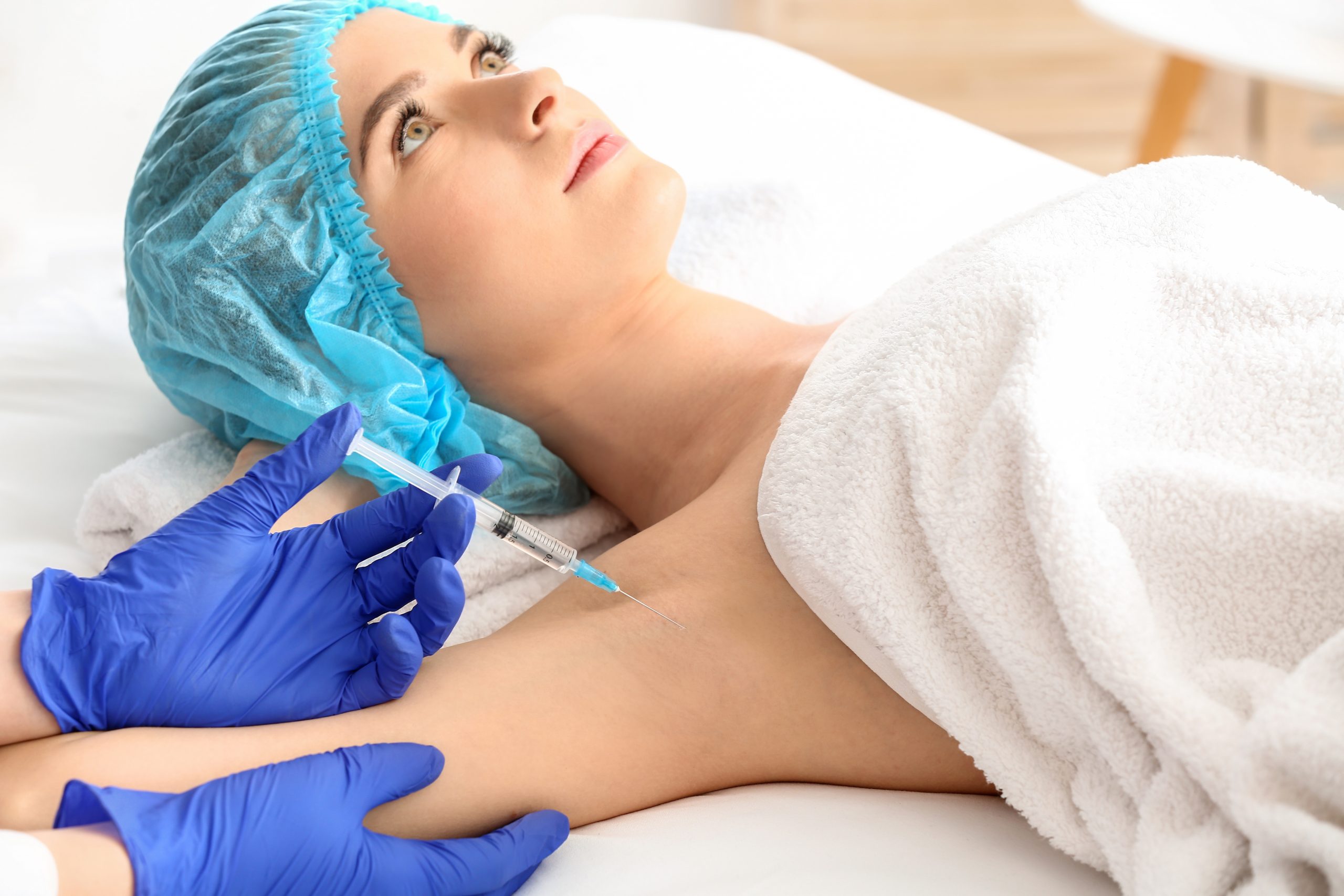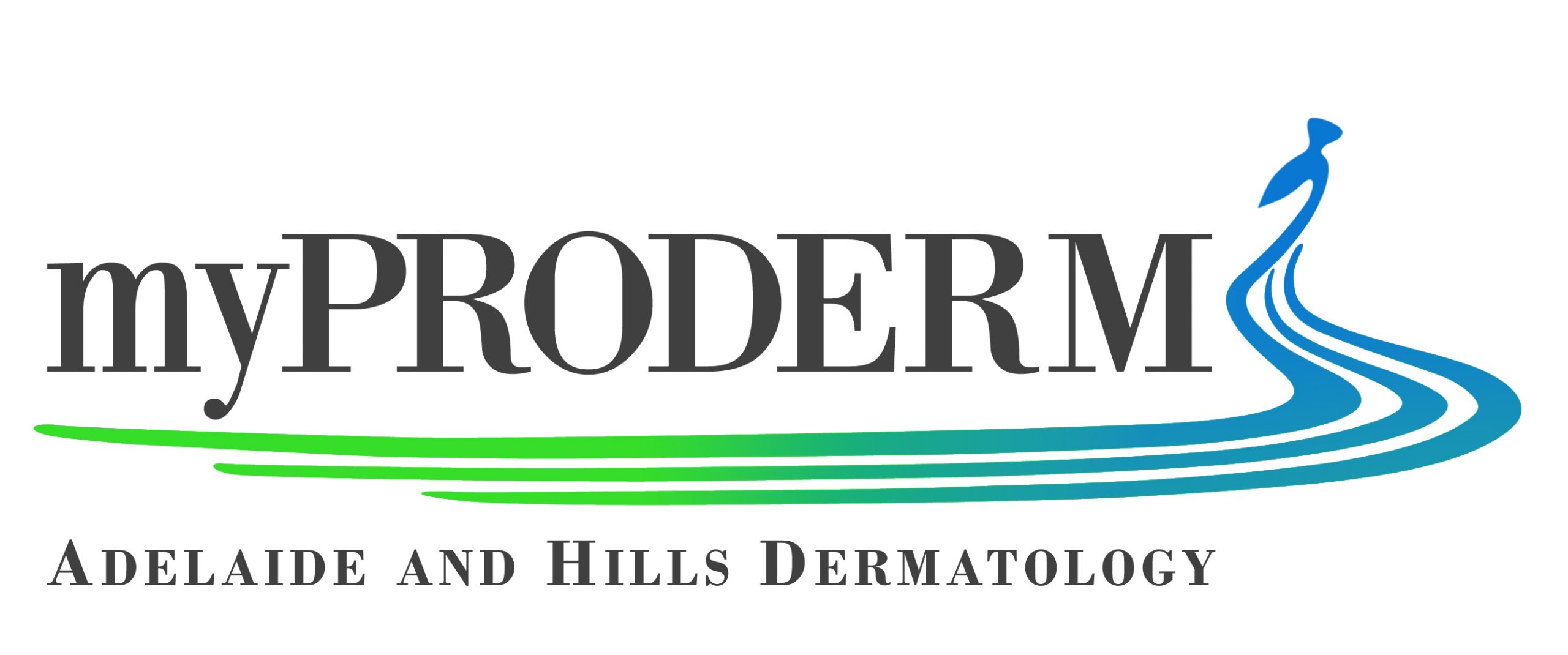Hyperhidrosis (Excessive Sweating)
Sweating is a normal and natural way for the body to cool down and it keeps you from overheating (thermoregulation). Excessive sweating (hyperhidrosis) occurs when sweat production exceeds the body’s need for temperature control.
There are two types of hyperhidrosis
- Primary hyperhidrosis is the most common form of hyperhidrosis (>90%). It is reported to affect 3-5% of the population and starts before the age of 25. It is not associated with any systemic/underlying medical cause. The sweating is symmetrical and involves the armpits in half of sufferers, but can involve one or multiple areas, such as palms, soles, face, and other sites.
- Secondary hyperhidrosis is the less common type that can present at any age.
It occurs when sweating too much is due to a medical condition like hormonal changes, infection or medication. This type of sweating is usually more generalised or asymmetric, occurs after the age of 25 and involves sweating overnight.

Primary hyperhidrosis has no underlying cause. There may be other members of the family with excessive sweating, and usually the sufferer is otherwise healthy.
Secondary hyperhidrosis can result from a number of conditions, these include
- Excessive perspiration or night sweats can occur in people with diabetes who get low blood sugar, or a side effect of diabetes medications
- The hormonal changes during menopause can cause uncomfortable feelings, such as hot flushes and sweats at night
- Infection such as tuberculosis, endocarditis and osteomyelitis may also cause the symptoms of fever and sweating
- Certain medications such as antidepressants, diabetes medications, or hormone replacement therapy also can lead to heavy sweating.
- Other causes include overactive thyroid, nervous system disorders and even some cancers.
Signs and symptoms of hyperhidrosis may include
- Frequent sweating for no specific reason which is emotionally or physically disruptive to your daily life.
- Extremely sweaty palms, soles, underarms, or face during sleep, cool time, or even you’re not exercising.
- Clothing becomes damp, stained and must spend a large amount of time each day dealing with sweat, such as changing clothes, wiping, placing napkins or pads under the arms, washing, wearing bulky or dark clothes
- Wet skin folds are prone to irritant dermatitis, chafing and infection
- When it impacts your life. Sweating can result in higher rates of depression and reduced levels of confidence and cause social awkwardness as sufferers are reluctant to make physical contact with people. Hyperhidrosis can also negatively impact on daily activities such as impairs performance and productivity of work.
- When there is physical discomfort such as irritating and painful skin problems, fungal or bacterial infections.
- When there is an unpleasant smell, caused by bacteria that live on the skin and break sweat down into acids that cause odour.
Treatment of secondary hyperhidrosis involves identifying and managing the underlying cause.
Treatment options for primary hyperhidrosis will depend on how much sweat is being produced, what areas of the body are affected and how much it is affecting your day-to-day life.
Treatments include
- Aluminium Chloride Hexahydrate 20%
This roll-on/spray-on treatment is applied directly to the affected areas of skin. It is particularly useful for hands, feet and underarms. Essentially, it is a super-potent version of antiperspirant and it works by plugging the sweat glands so that they cannot secrete sweat.
- Iontophoresis
Iontophoresis is started in a clinic setting with ongoing treatment that can be continued in the comfort of your own home with the purchase of an iontophoresis machine. It is most effective for hands and feet, however, special accessories can be used to treat other areas such as underarms and face. Iontophoresis uses a water bath and a low-level electric current, which affects the “Stratum Corneum” (the outermost layer of the skin). This results in blockage of the sweat glands at that skin layer and prevents sweat production. Not all dermatology offices will have iontophoresis available.
- Oral Anticholinergics
Anticholinergics are tablets that can be taken by mouth to block the activity of the chemical “Acetylcholine” in the body. This chemical is responsible for switching on the sweat glands to actively produce sweat. Oral anticholinergics is particularly suitable if you are experiencing generalised sweating.
- Anti Sweating Injections
This is an effective treatment that is most commonly used for the underarms, although it can be used in other areas. Your dermatologist will inject small amounts of botulinum toxin into the skin, which paralyses the tiny nerves supplying the sweat glands. This stops the sweat glands responding to the signal to generate sweat and can lead to you being sweat free for up to 6-9 months.
- Microwave Technology
This treatment may sound scary but it is safe and is only available for underarms. A therapist uses a hand-held device that creates a gentle “vacuum action” to lift the skin. Next, heat energy is applied to the area to permanently destroy the sweat glands. A secondary benefit of microwave technology is hair reduction in the treated area.
- Surgery
Surgical intervention has been largely superseded by other less invasive treatment options. It may be considered in people with very resistant hyperhidrosis.
General measures for helping you cope with sweating include
- Avoiding situations which trigger sweating, where possible (such as hot places).
- Learning relaxation techniques such as yoga and meditation to relieve the stress that triggers sweating.
- Reduce intake of alcohol or spicy foods, which may initiate flushing and trigger episodic sweating.
- Choosing clothing to wick moisture away from your skin, such as natural fabrics like cotton, or stain-resistant, sweat-proof garments, or adhesive absorbent underarm pads. A change of clothing may still be necessary during the day.
- Airing your feet during the day (removing shoes periodically) and having extra pairs of shoes and socks to change into throughout the day. Having multiple pairs of daytime shoes allows worn pairs to dry out for a few days before being worn again.
- Daily bathing using a non-soap cleanser.
- Apply an antiperspirant product (differs from a deodorant) to reduce the amount of sweat that reaches your skin.
